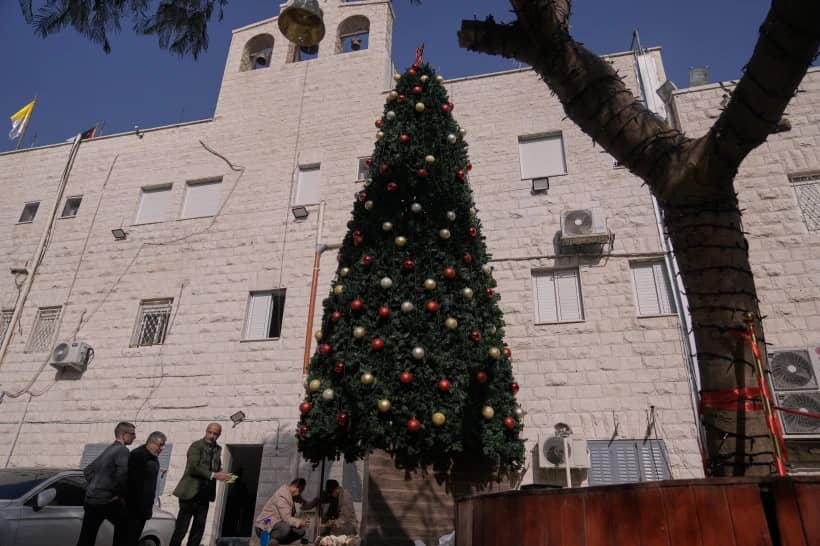ROME – Prior to the conclave that elected Francis, the Italian newspaper Corriere della Sera conducted an online poll about who its readers would like to see as the next pope. The landslide winner was Cardinal Sean O’Malley of Boston, outpacing his nearest competitor, Cardinal Angelo Scola of Milan, by more than twenty points.
Why, one might wonder, would Italians vote so strongly for an American over one of their own? For anyone who knows Italy, the answer is simple: When Italians look at the bearded O’Malley in his brown Capuchin habit, they don’t see an American, they see Padre Pio.
Padre Pio is the famous Capuchin saint of the 20th century, renowned for having the stigmata, for his other thaumaturgical abilities, for his mammoth commitment to the confessional, and for his general compassion for simple people, especially the suffering and the sick.
Now, Pope Francis has moved an American Capuchin with the same basic profile a step closer to sainthood, approving a miracle that clears the way for the beatification of Solanus Casey, who was born in Wisconsin and who spent most of his career in Detroit.
The announcement came on Thursday, as part of a crop of sainthood decisions that also included a recognition of heroic virtue for Cardinal Nguyên Van Thuân of Vietnam, one of the towering figures of 20th century Catholicism, allowing him now to be referred to as “venerable.”
Let me admit to a clear bias: I was educated by the Capuchin Franciscans on the high plains of Western Kansas, and the priests who have meant the most to me over the years, who have been there when I truly needed them, have been almost entirely Capuchins, so there is no sense in which I can claim impartiality when it comes to the order.
That said, the elevation of the American Padre Pio to the ranks of the “blessed” is, nevertheless, an important moment for the Catholic church in the United States.
For one thing, there are only ten American saints and seven blesseds, so the addition of someone else to their ranks is numerically significant. If he’s eventually approved for sainthood, he could be the first American-born male to obtain the honor of a halo.
Beyond that, Casey is arguably the closest sainthood candidate we have to the type of figure who fires the imagination of traditional Catholic cultures, meaning a saint of genuine simplicity who achieved no great works, but who simply oozed compassion and mercy for the common person.
Born on a farm in Oak Grove, Wisconsin, Casey became part of a family of Irish immigrants to America (he was the sixth of sixteen children, typical of the large families of the time). As he came of age, Casey worked a series of jobs in Wisconsin and Minnesota, including lumberjack, hospital orderly, and prison guard. (Among other things, that makes Casey an ideal patron saint of prison ministry.)
Eventually he settled in Detroit and entered the Capuchin order, and was ordained to the priesthood in 1904. Because of his alleged academic limitations, he was ordained as a “sacerdos simplex,” which meant that he could say Mass but not preach or hear confessions.
He had a love of the violin and played it well, although his singing voice was apparently so terrible that he was forced to go it alone much of the time. He loved his community, and would often join younger friars for games of tennis and volleyball.
In Detroit, he worked for 21 years as a doorkeeper at a Capuchin friary, but his fame was for services he conducted for the sick every Wednesday afternoon. People flocked to them, often reporting miraculous cures, blessings and other interventions attributed to his prayer. In addition, Casey would also offer a bowl of soup to anyone who was hungry, proving that the natural and the supernatural are inextricably intertwined.
Such was Casey’s fame that when he died in 1957, a reported 20,000 people filed by his coffin before he was finally buried. During his final illness, Casey reportedly said, “I’m offering my suffering that all might be one.”
His sainthood cause opened in 1976, America’s bicentennial year, and St. Pope John Paul II approved a decree of heroic virtue for Casey in 1995. Now Pope Francis has cleared the path for the Capuchin to be beatified, the penultimate stage before sainthood.
“The beatification of Father Solanus Casey is an incomparable grace for the Church in the Archdiocese of Detroit and for the whole community of Southeast Michigan,” said Archbishop Allen H. Vigneron of Detroit, in a statement on Thursday.
“He is an inspiration to all us Catholics – and to all – of the power of grace to transform one’s life,” Vigneron said.
“Long before we knew and loved Pope Francis, we had the example of Fr. Solanus who lived the Gospel of Mercy,” said Father Michael Sullivan, Provincial Minister of the Capuchin Franciscan Province of St. Joseph.
“Known for his compassion and simplicity, he drew many thousands to God. Rather than call attention to himself, he taught people to thank God for His blessings,” Sullivan said. “We are overjoyed at the news that Father Solanus’s holiness is recognized by the Holy Father.”
There are, of course, saints who lived more dramatic lives, who worked more spectacular miracles, or who produced more memorable works. Few, however, incarnate the simple love of ordinary people and their travails more thoroughly, and few reflect the selflessness of real holiness more completely.
That’s always been the Capuchin genius, and it’s why Solanus Casey is now just one step away from the finish line of becoming a Catholic saint.














